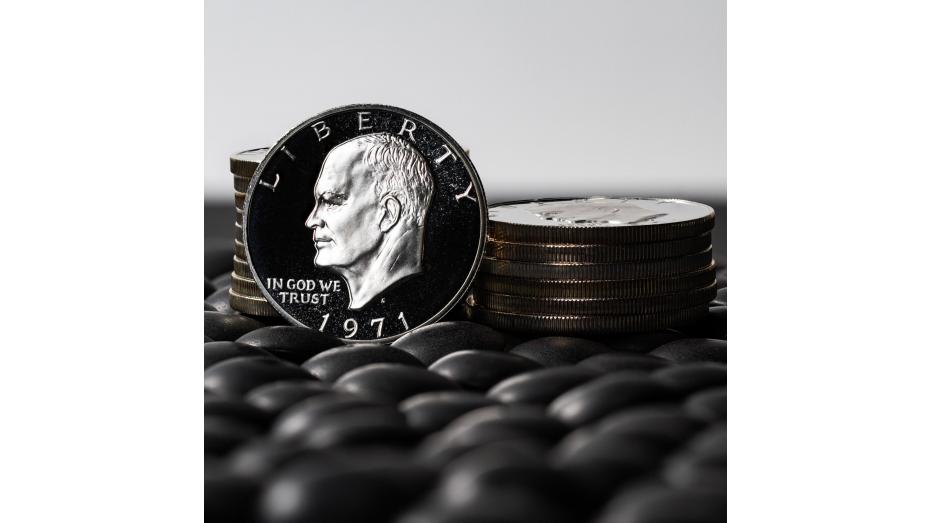How Dwight Eisenhower’s Legacy was Carried on in Silver
It is generally believed that silver was removed from United States coinage following Acts of Congress in the 1960s and 1970s. While this is mostly true, many are surprised to learn that select proof Eisenhower Dollars were still struck from silver from 1971 until 1976. The Mint’s decision to continue striking proof Ike Dollars from silver is rooted in a sentimental story that involves heartfelt advocacy from the former president’s wife and colleagues in Washington, D.C.
Silver was taken out of dimes and quarters in 1965 due to the Coinage Act of 1965, and half dollars were reduced from 90% to 40%. Half dollars lost their silver in 1971 due to legislation signed by President Nixon in 1970. However, as there was no US dollar coin when these pieces of legislation were passed, there was no mention of removing silver from the dollar. This subtle loophole created a small window of hope for another American Silver Dollar.
Congress had full plans of creating a new dollar coin without silver in 1971, but outcry from Iowa Congressman H.R. Gross urged Congress to reconsider its plans.
When advocating for silver to remain in Ike Dollars, Gross stated, "You would be doing the memory of President Eisenhower no favor to mint a dollar made perhaps of scrap metal."
Gross’ sentiments were shared among his colleagues in the legislature. Idaho Senator James McClure echoed Gross’ remarks by stating, “It is somehow beneath the dignity of a great president like General Eisenhower to withhold silver from the coin."
Even despite the push to keep silver in the Ike Dollars, not all Congressmen were sold on the idea. The matter was to be voted on in both chambers of Congress on October 14th, 1970, which happened to be the late president’s birthday.
Prior to the vote, the widowed Mamie Eisenhower wrote a letter to the Senate in which she pleaded her case for silver to remain in the coins. Her husband, she recalled, had an affinity for silver dollars and often handed them out as mementoes. Furthermore, he even went to great lengths to acquire silver dollars struck in his birth year.
Ultimately, a compromise was reached that closely resembled the bill passed in the Senate. Silver was to be removed from the circulating coins, which would henceforth be struck from copper-nickel clad. The proof coins, however, would be composed of a silver-copper alloy. The coins would be plated with 80% silver and a center of 20.9% silver. In total, the coin was composed of 40% silver and 60% copper. The legislation was passed on the condition that the silver dollars were struck only from silver already held in the United States’ bullion depositories.
The Silver Ike Dollars were very popular among collectors and sold well for as long as they were minted. In 1977, as the Mint had already planned to replace the Eisenhower Dollar with a Susan B. Anthony Dollar, silver was removed from the proof coins. The series was discontinued the following year to usher in the Anthony Dollars.
Though short-lived, the proof Ike Dollars of the 1970s gave collectors a final taste of an American Silver Dollar. To this day, these coins carry an incredible legacy, much like the man whose image was displayed on its obverse.






